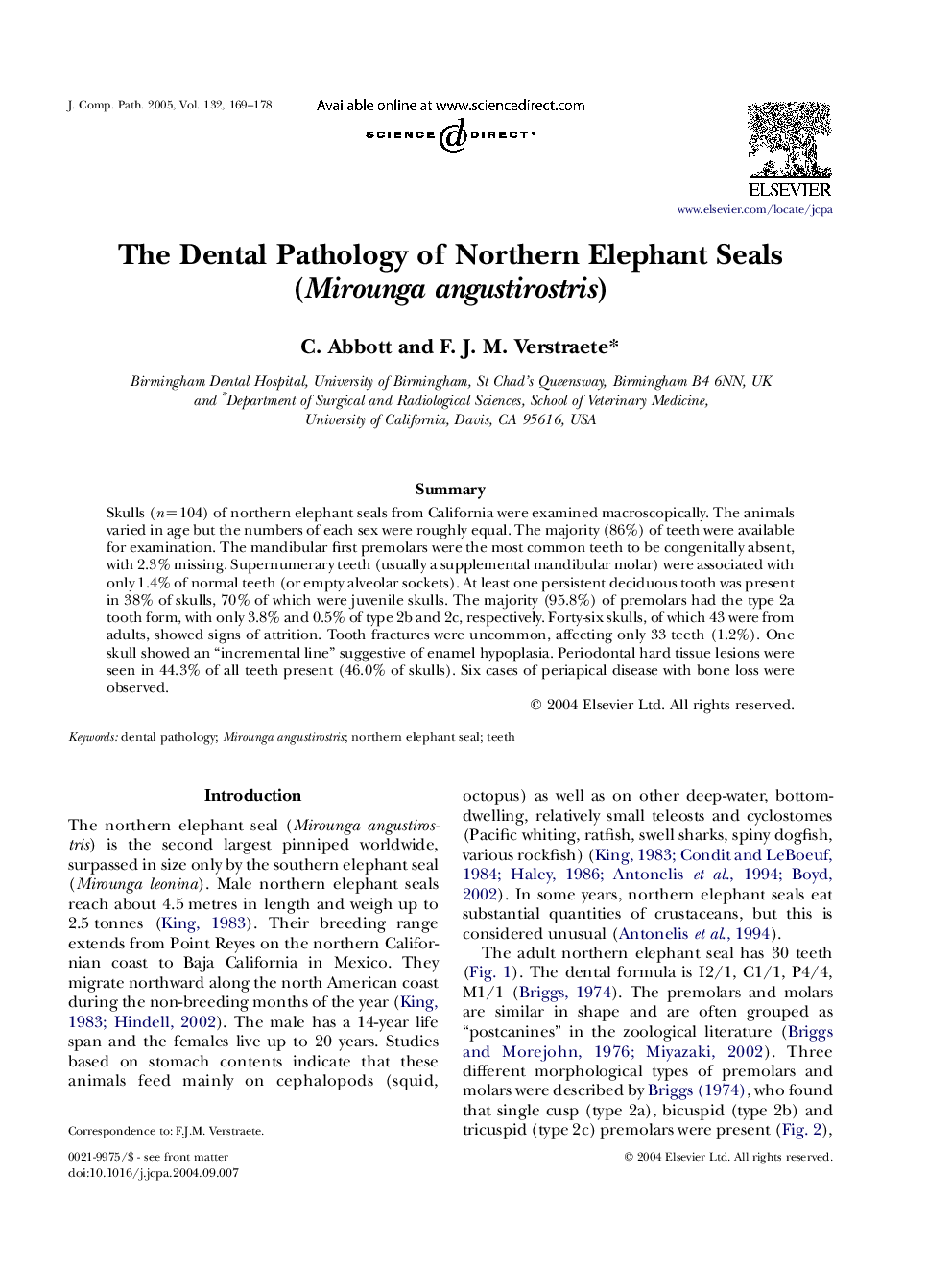| Article ID | Journal | Published Year | Pages | File Type |
|---|---|---|---|---|
| 8980812 | Journal of Comparative Pathology | 2005 | 10 Pages |
Abstract
Skulls (n=104) of northern elephant seals from California were examined macroscopically. The animals varied in age but the numbers of each sex were roughly equal. The majority (86%) of teeth were available for examination. The mandibular first premolars were the most common teeth to be congenitally absent, with 2.3% missing. Supernumerary teeth (usually a supplemental mandibular molar) were associated with only 1.4% of normal teeth (or empty alveolar sockets). At least one persistent deciduous tooth was present in 38% of skulls, 70% of which were juvenile skulls. The majority (95.8%) of premolars had the type 2a tooth form, with only 3.8% and 0.5% of type 2b and 2c, respectively. Forty-six skulls, of which 43 were from adults, showed signs of attrition. Tooth fractures were uncommon, affecting only 33 teeth (1.2%). One skull showed an “incremental line” suggestive of enamel hypoplasia. Periodontal hard tissue lesions were seen in 44.3% of all teeth present (46.0% of skulls). Six cases of periapical disease with bone loss were observed.
Related Topics
Life Sciences
Agricultural and Biological Sciences
Animal Science and Zoology
Authors
C. Abbott, F.J.M. Verstraete,
